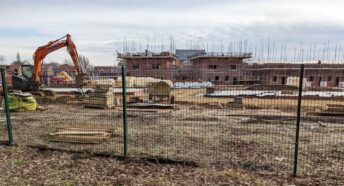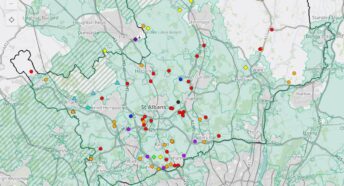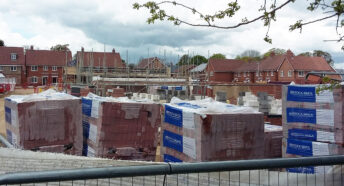Guidance on how to respond – Government consultation on NPPF changes
We’re publishing our guidance on how everyone can respond to the current Government consultation on proposed changes to the National Planning Policy Framework (NPPF) and the wider planning system.
The Government has published amendments to the National Planning Policy Framework (NPPF) which together with a Written Ministerial Statement by the Secretary of State for Housing, Communities and Local Government propose significant changes to the planning system. The public is invited to respond to the Government’s consultation on these proposed changes before the deadline of 11:45 PM on Tuesday, 24th September 2024.
Here at CPRE Hertfordshire, we are deeply concerned about the proposed changes and will be submitting a robust consultation response. It is vitally important that local residents also respond to the consultation and we encourage everyone who cares about the countryside to submit their own individual consultation response.
The Government’s full consultation asks 106 questions under fifteen chapter headings. It is not necessary to answer all the questions – you can address as few or as many as you wish.
Details of how to respond, which have been taken directly from the Government website, are presented below. The consultation can be accessed through https://www.gov.uk/government/consultations/proposed-reforms-to-the-national-planning-policy-framework-and-other-changes-to-the-planning-system
Our point of view
CPRE Hertfordshire’s mission is to protect, promote and enhance Hertfordshire’s countryside for everyone, for today and for the future. Our charity’s focus is on the countryside, and not all of the items in the Government’s consultation deal with countryside matters.
For further background please review our two recently published articles –
Our initial briefing note on the proposed changes, published 7 August 2024
Our spotlight on the huge increases in development that would occur in every part of Hertfordshire if the proposed changes are adopted, published 9 September 2024
Below, under eight of the consultation chapter headings, are summary issues which you are free to use for your own response. Please note, for convenience the content of this webpage is also available for download.
Chapter 1 – Introduction
The government’s priority for economic growth is recognised but this should not be at the expense of the environmental, social, and economic implications of inappropriate and wasteful development.
The proposed changes have harmful and damaging implications for the countryside, and could actually hinder rather than help the Government in achieving its objectives for economic growth and housing provision.
CPRE’s research shows that over 1.2 million dwellings could be built on existing identified brownfield sites, and there are many other sites where planning permission has been granted but building has not been completed; the Government should concentrate on implementing these projects rather than considering further weakening of environmental controls and Green Belt protections.
We support the emphasis on strategic planning; Local Plans have always taken far too long to prepare; further encouragement to complete them is necessary.
Chapter 2 – Policy objectives
Strategic planning can introduce environmental issues more clearly.
There is too much concentration on promoting traditional economic development approaches which lead to wasteful and inappropriate use of natural resources and the countryside.
Chapter 3 – Planning for the homes we need
The imposition of housing need figures based on existing housing stock is illogical and unrelated to housing supply and delivery with substantial damaging implications for highly valued countryside.
The use of designated protected land plays virtually no part in solving the chronic lack of housing in certain sectors, specifically truly affordable housing.
It is housing market failure in which developers have guaranteed profitability that has resulted in inadequate accommodation, not planning system failure.
The continuing scandal of more social housing being sold than being created must finally be resolved; fixing the housing market failure should not be at the expense of countryside loss and housebuilding in the wrong places.
Chapter 4 – A new standard method for assessing local housing needs
Housing targets for Local Plans should take account of all local circumstances, including population demographics and household characteristics.
Dwelling stock is not a sustainable basis for assessing housing need which is generated by people and households, not buildings, and should be assessed accordingly.
The additional increment for affordability seems to be an arbitrary figure calculated solely to result in the aggregate national number of over 300,000 houses a year devised by the previous government.
The standard method leads to completely unrealistic housing need figures in Green Belt authorities in Hertfordshire.
Chapter 5 – Brownfield, grey belt and the Green Belt
Much more work needs to be done on what constitutes ‘grey belt’ for each Council area.
There is a massive incentive to let countryside owned or under option by developers to deteriorate so that it becomes ‘grey’.
The Government should make very clear that any release of ‘grey belt’ means increased protection for remaining Green Belt, given the stated intention to maintain existing designations.
The proposed changes to the NPPF and Written Ministerial Statement provide no guidance on which land or sites make a limited contribution to the Green Belt; this will inevitably lead to inconsistencies between neighbouring Local Plan areas.
Chapter 6 – Delivering affordable, well-designed homes and places
The requirement for 50% affordable housing for any land released from Green Belt may be seen as positive but the means of achieving it are not defined.
The existing definition of “affordable” as 80% of the market price is unaffordable for many and must be changed to a more realistic definition tied to local median earnings.
The proposed retention of the viability “loophole” (for developers to reduce delivery of affordable homes from that promised at time of planning consent) means that in all likelihood the needed number of truly affordable homes will not be delivered, undermining the Government’s efforts in this regard.
Chapter 7 – Building infrastructure to grow the economy
Strategic planning should include all aspects of sustainable development, and not just the promotion of traditional forms of economic growth with its implications for the environment.
The emphasis on large-scale infrastructure provision such as gigafactories, data centres and similar developments is a clear challenge to protected countryside in many areas.
Chapter 9 – Supporting green energy and the environment
The use of designated protected land such as Green Belt and productive agricultural land for ground-mounted solar arrays is wasteful and inappropriate, leaving aside the visual, landscape, wildlife and biodiversity considerations.
The promotion of large-scale commercial developments offers major opportunities for rooftop energy generation which are not addressed.
Best and Most Versatile agricultural land (Grades 1, 2 and 3a) should be retained for food production and protected from development in all but the most exceptional cases, to help the UK achieve greater domestic food security.
How to respond to the consultation
The website for The Ministry of Housing, Communities and Local Government contains all details of the consultation, and how to respond, including…
Deadline
This consultation began on Tuesday 30 July 2024 at 2 pm and will close at 11.45 pm on Tuesday 24 September 2024.
Enquiries
For any enquiries about the consultation please contact: PlanningPolicyConsultation@communities.gov.uk
Ways to respond
The Government will accept consultation responses via its online consultation portal, email, or post. With all replies, you should confirm whether you are replying as an individual or submitting an official response on behalf of an organisation and include your name, your position (if applicable), and the name of your organisation (if applicable).
The Government asks that you make it clear which question or paragraph number each comment relates to, and ensure that the text of your response is in a format that allows copying of individual sentences or paragraphs, to help them when considering your view on particular issues.
That said, at the end of each chapter in the consultation, there is a general question like “Do you have any additional comments on…” and you may use these general questions for any free form comments, such as those we’ve listed above in our point of view.
Online portal. Citizen Space is the online consultation portal and is the Government’s preferred route for receiving consultation responses. This assists “analysis of the responses, enabling more efficient and effective consideration of the issues raised.” It is possible to save your incomplete online response and complete it later, making it convenient to use this method.
Email. If you cannot respond via Citizen Space, you may send your response by email to: PlanningPolicyConsultation@communities.gov.uk
Post. Written responses should be sent to:
Planning Policy Consultation Team
Planning Directorate – Planning Policy Division
Ministry of Housing, Communities and Local Government
Floor 3, Fry Building
2 Marsham Street
London
SW1P 4DF







